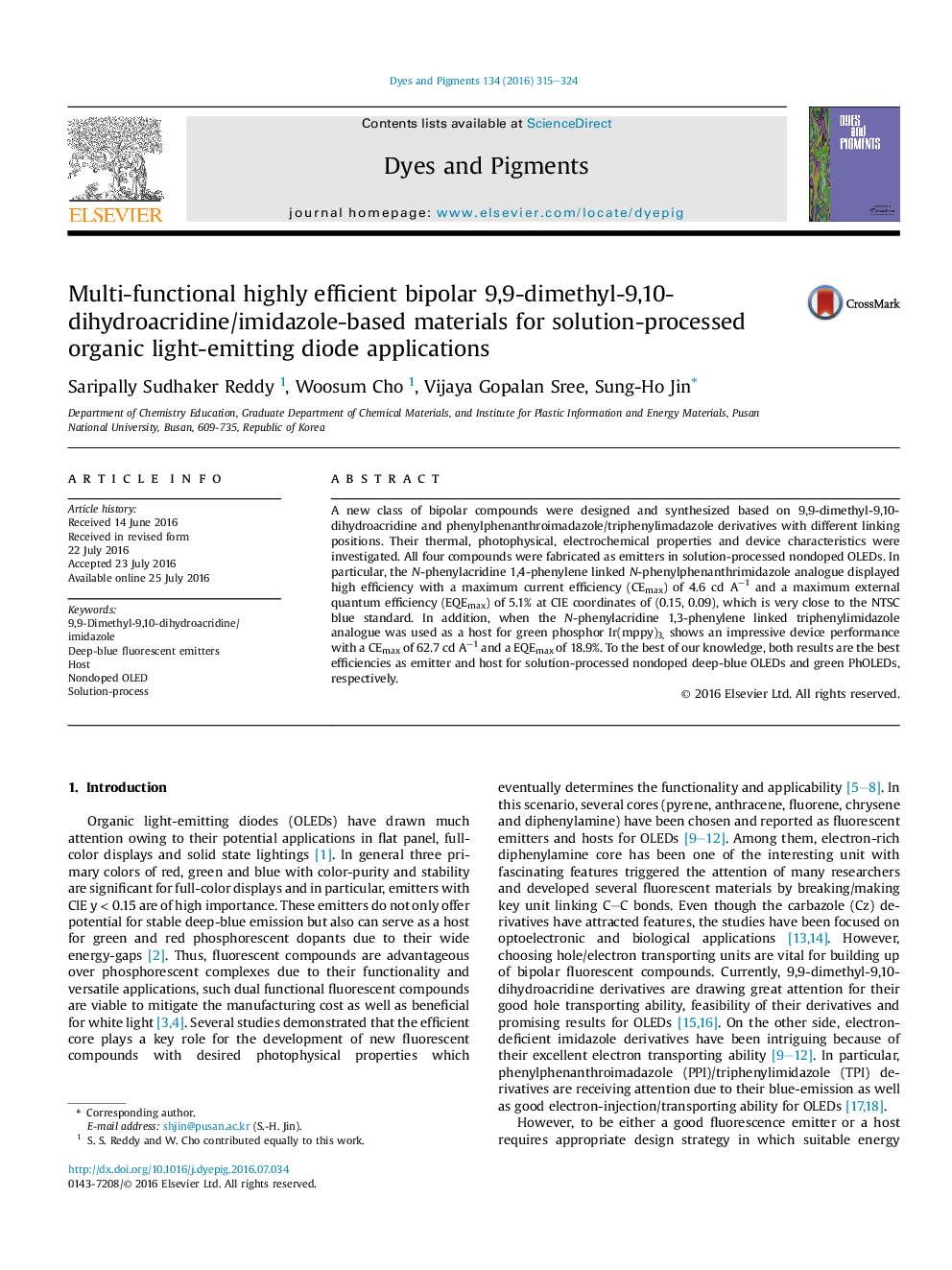| Article ID | Journal | Published Year | Pages | File Type |
|---|---|---|---|---|
| 175265 | Dyes and Pigments | 2016 | 10 Pages |
•Four bipolar compounds are designed and synthesized.•Compounds based on acridine and imidazole derivatives.•Thermal, photophysical and electrochemical properties are studied.•Solution-processed nondoped deep-blue devices showed high efficiency of 5.1%.•As a host for solution-processed green devices displayed high efficiency of 18.9%.
A new class of bipolar compounds were designed and synthesized based on 9,9-dimethyl-9,10-dihydroacridine and phenylphenanthroimadazole/triphenylimadazole derivatives with different linking positions. Their thermal, photophysical, electrochemical properties and device characteristics were investigated. All four compounds were fabricated as emitters in solution-processed nondoped OLEDs. In particular, the N-phenylacridine 1,4-phenylene linked N-phenylphenanthrimidazole analogue displayed high efficiency with a maximum current efficiency (CEmax) of 4.6 cd A─1 and a maximum external quantum efficiency (EQEmax) of 5.1% at CIE coordinates of (0.15, 0.09), which is very close to the NTSC blue standard. In addition, when the N-phenylacridine 1,3-phenylene linked triphenylimidazole analogue was used as a host for green phosphor Ir(mppy)3, shows an impressive device performance with a CEmax of 62.7 cd A─1 and a EQEmax of 18.9%. To the best of our knowledge, both results are the best efficiencies as emitter and host for solution-processed nondoped deep-blue OLEDs and green PhOLEDs, respectively.
Graphical abstractFigure optionsDownload full-size imageDownload as PowerPoint slide
